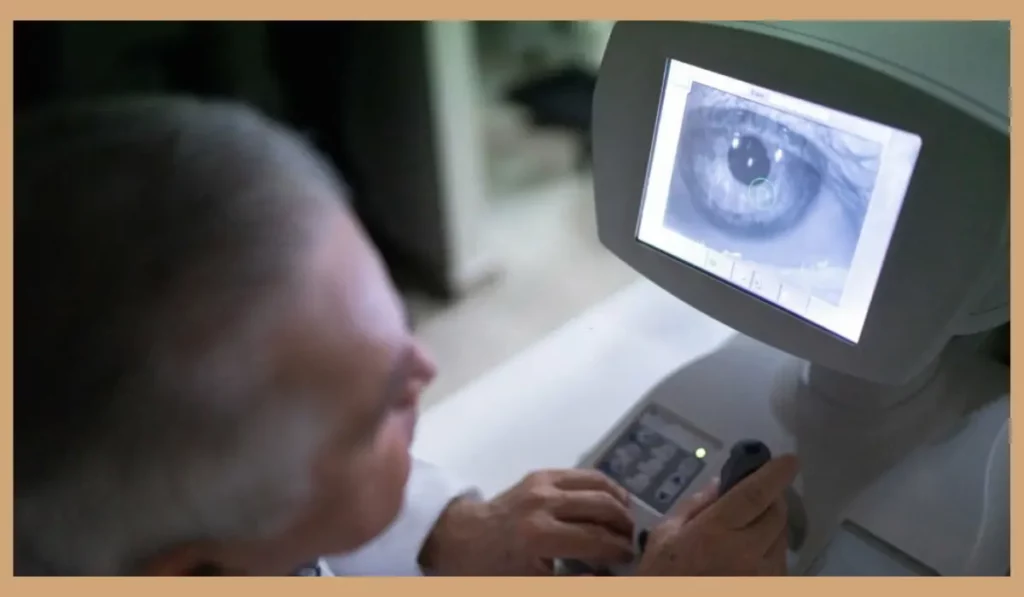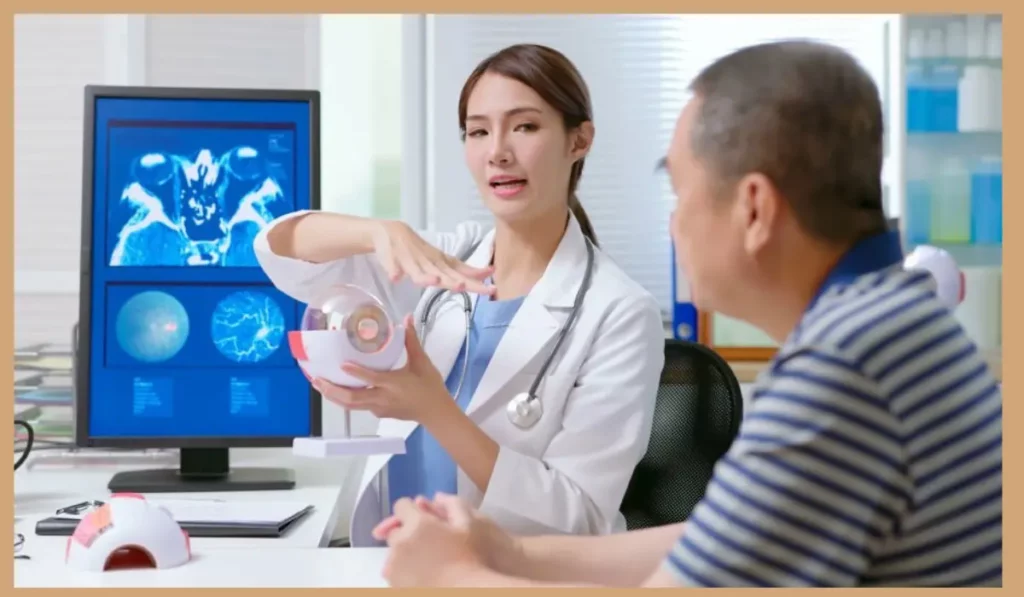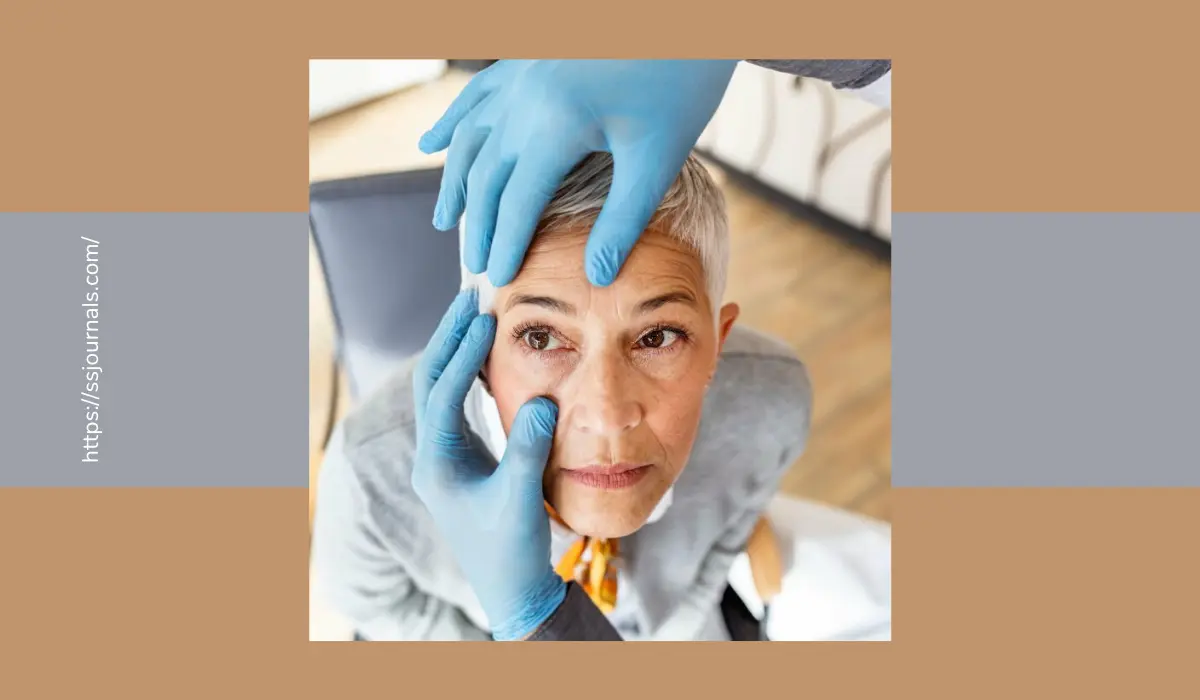Cataract is a term you must have come across, and there’s a likelihood most of the older generation will develop cataracts as they age. This article will examine in detail what cataracts are, the causes, symptoms, diagnosis, and treatment of the condition that causes poor eyesight.
What Exactly Are Cataracts?

Your eye is like a camera, with a natural lens behind the pupil that’s responsible for focusing light onto the retina. This little lens is a hero, making sure you see the world. But here’s the hitch cataracts are like the villains of this story. They’re essentially a clouding of that trusty lens, turning your vision all blurry and hazy.
The Culprits Behind Cataracts
Now, you might be wondering how these cataracts sneak into your eyes. Well, there are a few usual suspects:
- Father Time: Aging is the number one culprit. As the years go by, the proteins in your eye’s lens start to break down and clump together, causing cloudy chaos. While this aging process starts around 40, it’s usually not until later in life that it starts messing with your vision.
- Blame It on the Sun: Yep, even the sun can be a villain here. Excessive UV radiation, whether from sunlight or tanning beds, can speed up cataract formation. So, don those stylish shades with UV protection to shield your peepers.
- Smoking and the Booze: Unhealthy habits like smoking and excessive alcohol can up your cataract risk. Smoking is a major no-no because it introduces those pesky free radicals that can fast-track the lens-clouding process.
- Medical Matters: Certain medical conditions, like diabetes, and the use of certain medications, especially steroids, can give cataracts a boost. So, managing your health and regular check-ups are your best friends here.
- The Family Factor: Sometimes, cataracts run in the family. If your genes are a bit cloudy in the eye department, it’s a good idea to be proactive and keep those eye check-ups on the agenda.
Recognizing The Sneaky Symptoms

Cataracts are stealthy they sneak up on you, so it’s important to know what to look for:
- Blurry or Hazy Vision: The most common and frustrating symptom. It can make everyday tasks like reading, driving, and recognizing faces a real challenge.
- Glare Galore: When driving at night, those headlights can feel like they’re launching fireworks right into your eyes. Not fun. The bright sunlight might also send you squinting for cover.
- Frequent Eyeglass Changes: You might find yourself in a never-ending cycle of changing prescriptions as your vision goes on a rollercoaster ride.
- Dull Colors: The world can lose its vibrancy, making it tough to tell your red socks from your brown ones.
- Double Vision: Seeing double in one eye? That’s more disorienting than a maze.
- Halo Party: Lights might throw a halo around themselves, especially when you’re staring at oncoming headlights. It’s like a disco in your eyeballs.
Get The Diagnosis Right
If you suspect cataracts are dimming your vision, it’s time to see an eye doctor – an ophthalmologist. They’ll run a bunch of tests and fancy gadgets to figure out what’s going on, including:
- Visual Acuity Tests: They’ll check how well you can see at various distances. It’s like an eye exam Olympics.
- Slit-Lamp Examination: This sounds fancy, but it’s a close-up inspection of your lens and other eye structures.
- Dilated Eye Exam: They’ll pop in some eye drops to get a better look at the back of your eye, including the retina.
- Tonometry: This measures the pressure inside your eye, which can help spot other eye issues like glaucoma.
There is a need for early detection. It’s good news if you can catch cataracts before it’s too late and protect your eyesight as well. The eye doctor will also tell you how bad your cataract is and what the way forward is.
The Bright Side: Treating Cataracts
The treatment of cataracts is a winner. Cataract surgery remains the favorite solution. Yes, it’s among the highest rates of surgery in the world. In the process, the cloudy natural lens is swept aside from the eye and replaced by the IOL the snazzy artificial lens.
- Cataract surgery: It’s usually short-term and outpatient, meaning no hospital trips or months of recovery time. It’s an easy process, causing little pain. Luckily, most people can resume normal activities soon after surgery. The success rate? Okay, it’s very high, at which point there is usually an unprecedented change for the better in vision.
- Picking the Right IOL: These include monofocal IOLs, multifocal IOLs, and toric IOLs for astigmatism. The IOL that perfectly fits your eye is selected by your surgeon.
Conclusion
Cataracts are common, but they’re no match for modern medicine. Whether it’s age, genetics, or lifestyle choices that brought them into your life, remember that early detection is the key to keeping your vision crystal clear. So, if you suspect some cloudiness in your vision, don’t wait to consult an eye care pro. Your world can be vivid and bright again, thanks to cataract surgery.
FAQ
Old age is one of the causes of cataracts, while others include genetics or lifestyle issues.
You may not prevent this from happening altogether, but you can lower the risk by wearing sunglasses when outside for prolonged periods and maintaining good health.
Cataract surgery has been proven to be very effective as well as safe, with its success rates exceeding ninety percent. One of the world’s most common surgeries.
However, not all cataracts necessitate surgery. At first, vision could be improved by the use of new glass and brighter lighting. Removing cataracts entirely can be done through surgery alone.
Within a few days, most patients recover their vision and completely recover it within a few weeks.
Although these are relatively uncommon, some of the complications that may develop include infection, hemorrhage, and retina dislocation. Your surgeon should go through these risks beforehand and inform you.

